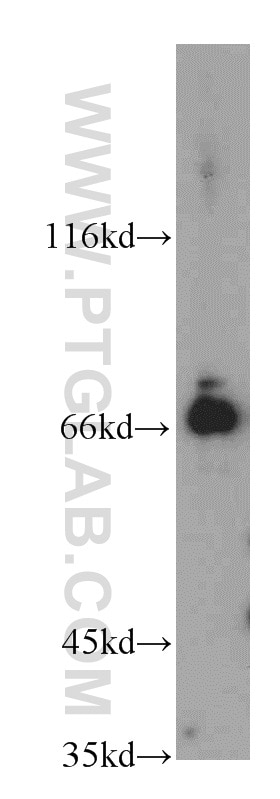Anticorps Polyclonal de lapin anti-BTN2A1
BTN2A1 Polyclonal Antibody for WB, ELISA
Hôte / Isotype
Lapin / IgG
Réactivité testée
Humain, rat, souris
Applications
WB, ELISA
Conjugaison
Non conjugué
N° de cat : 20596-1-AP
Synonymes
Galerie de données de validation
Applications testées
| Résultats positifs en WB | cellules Jurkat, cellules HeLa, cellules MCF-7, tissu splénique de rat, tissu splénique de souris |
Dilution recommandée
| Application | Dilution |
|---|---|
| Western Blot (WB) | WB : 1:500-1:3000 |
| It is recommended that this reagent should be titrated in each testing system to obtain optimal results. | |
| Sample-dependent, check data in validation data gallery | |
Informations sur le produit
20596-1-AP cible BTN2A1 dans les applications de WB, ELISA et montre une réactivité avec des échantillons Humain, rat, souris
| Réactivité | Humain, rat, souris |
| Hôte / Isotype | Lapin / IgG |
| Clonalité | Polyclonal |
| Type | Anticorps |
| Immunogène | BTN2A1 Protéine recombinante Ag14545 |
| Nom complet | butyrophilin, subfamily 2, member A1 |
| Masse moléculaire calculée | 60 kDa |
| Poids moléculaire observé | 69 kDa |
| Numéro d’acquisition GenBank | BC016661 |
| Symbole du gène | BTN2A1 |
| Identification du gène (NCBI) | 11120 |
| Conjugaison | Non conjugué |
| Forme | Liquide |
| Méthode de purification | Purification par affinité contre l'antigène |
| Tampon de stockage | PBS avec azoture de sodium à 0,02 % et glycérol à 50 % pH 7,3 |
| Conditions de stockage | Stocker à -20°C. Stable pendant un an après l'expédition. L'aliquotage n'est pas nécessaire pour le stockage à -20oC Les 20ul contiennent 0,1% de BSA. |
Informations générales
BTN2A1, also named as BT2.1, BTF1 is a 527 amino acid protein, which belongs to the immunoglobulin superfamily. BTN2A1 is highly expressed in brain, bone marrow, small intestine, muscle, spleen and pancreas and moderate expression was seen in lung, liver and kidney. The calcualted molecular weight of BTN2A1 is 59 kDa, but glycosylation of BTN2A1 is about 69 kDa. (PMID: 17785817)
Protocole
| Product Specific Protocols | |
|---|---|
| WB protocol for BTN2A1 antibody 20596-1-AP | Download protocol |
| Standard Protocols | |
|---|---|
| Click here to view our Standard Protocols |






